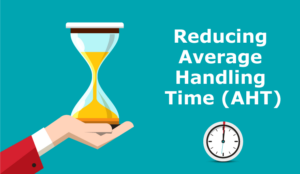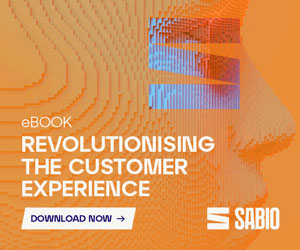It’s no secret that positive customer experiences contribute far more conversions and referrals than competitive pricing or aggressive marketing.
But there exists an “experience disconnect” between brands and customers that few brands are able to bridge. While customers value convenience in interactions and consider it as a top ingredient of “remarkable customer experience”, brands still give more weightage to speed.
A speedy interaction means a good interaction, in their dictionary, which is a lopsided view of things. It tends to encourage live chat agents to deliver hasty resolutions in order to close the interaction and keep the average handle time (AHT) under control.
In fact, in our interactions with clients, reducing average handling time for live chat without compromising service quality has emerged as their top challenge. And the answer to this challenge lies in asynchronous live chat.
Read on to understand what this means and how it allows brands to deliver convenient and high-quality customer experiences at scale.
What Is AHT?
But first, let’s clarify what AHT means. Average handle time or AHT refers to the time taken by a contact centre agent to respond to a query from the moment it is assigned until it is resolved.
When agents take longer to solve issues, customers experience longer wait times and unsatisfactory experiences, resulting in frustration and churn in worst cases.
Moreover, longer AHT means you need more agents to handle the same number of queries, which amounts to operational inefficiency and revenue loss for the business.
Understanding AHT for Synchronous vs. Asynchronous Live Chat
Synchronous chat is a scenario where a session created between a customer and a support agent stays active only as long as both participants are connected and online. As soon as either one of the two leaves the chat or closes the browser, the chat is disconnected.
Asynchronous chat is a scenario where the chat session stays active irrespective of whether the participants are online or offline. So even if one of the participants is offline, the other can send messages which the first person can see once they are back online.
Synchronous chat is an archaic agent-first approach that hinges on agent availability. It allows the customer to initiate a chat only when the agent is available. In short, agent availability takes precedence over customer happiness and convenience.
Quite evidently, this sort of approach is unsuccessful with modern brands that value customer happiness above all.
Asynchronous chat places the control in the customer’s hands, allowing them to initiate interactions at their preferred times, without considering agent availability as an impediment.
Calculating AHT for Synchronous vs. Asynchronous Live Chat
Calculating AHT for synchronous chat is quite straightforward as conversations happen in real-time, meaning AHT equals the total session time. AHT for synchronous live chat is typically short because agents and customers engage in focused back-and-forth communication.
AHT for asynchronous live chat involves staggered communication with delays between messages. Calculating AHT in these scenarios is tricky and demands careful logic creation to include only those time durations when agents are assigned/working on the case.
AHT for asynchronous live chat tends to be longer because there are intervals between responses and communication spread over extended timeframes.
But it’s worth understanding that longer AHT in asynchronous doesn’t necessarily connote negative customer experience. The extra time allows agents to research and provide thoughtful, accurate responses and solve the issue more satisfactorily.
How to Improve AHT
AHT improves organically with the optimization of agent-side processes, tools and workflows that enable speedy resolutions. Here are some effective tips to accomplish this:
1. Deploy Self-Serve Options
- Utilize conversational AI bots to gather customer information, guide customers through simple processes and escalate complex issues to human agents when necessary.
- Provide knowledge bases and FAQs within the live chat interface, empowering customers to find answers to routine questions without needing to contact agents.
2. Implement Effective Routing
- Optimize agent capacity by unassigning inactive cases, allowing agents to focus on active customers.
- Consider geolocation-based routing to direct traffic from specific areas of operations to specialized agents.
3. Empower Agents With Productivity Tools
- Utilize canned responses, snippets and shortcuts for commonly used replies. Leverage AI to predict and complete the most appropriate canned responses.
- Use smart compose features that allow agents to select the best response suggestions with one click.
- Provide agents with a preview of what customers are typing, enabling agents to prepare responses proactively.
- Implement website and CRM integrations to customize workflows for logged-in users, eliminating redundant requests for customer details.
- Enable agents to access relevant knowledge base articles, guided workflows and historical conversations for quick reference.
- Allow video calling and co-browsing for real-time communication, which minimizes back-and-forth and errors arising from miscommunication.
4. Optimize and Monitor Agent Workflows
- Analyze chat transcripts to identify areas for improvement and address issues that cause delays in resolution.
- Set reminders and notifications for agents if they haven’t replied to an assigned case within a time threshold, and alert their supervisors as well.
- Re-assign the case to some other agent if the assigned agent doesn’t respond within a time threshold.
- Allow agents to snooze inactive cases instead of wasting time awaiting customer response.
- Send auto-generated responses and follow-up messages for certain predefined scenarios and timeframes.
It’s crucial and challenging to maintain service quality and operational excellence while attempting to reduce AHT. In fact, a shorter AHT does not necessarily mean accurate responses or efficient contact centre operations.
AHT is a complex concept with fine nuances that come to light when you identify patterns by asking questions like: Is AHT consistent across all agents or variable?
Does AHT vary during certain times of the day or follow a consistent trend? Are there particular query types that are prone to longer resolution times?
Deep analysis of your AHT numbers and patterns will surface actionable insights and drive strategic decision-making that eventually boosts customer experience, retention and satisfaction.
Why Do Brands Use Synchronous Chat Even Now?
Brands are still using synchronous chat even now owing to:
- Legacy System Limitations: Established players in the market often rely on synchronous chat due to limitations in their legacy systems. The transition to asynchronous chat is challenging for them, given the lack of expertise and technical constraints associated with their dated architectures.
- Agent-Centric Approach: Many brands prioritize an agent-first approach, opting for synchronous chat to provide agents with a streamlined and immediate means of interacting with customers. This one-go interaction is misconstrued as a convenient way to deliver real-time support.
Wrapping Up
Evidently, there is a need to adopt asynchronous live chat, giving flexibility to customers to reply at a time convenient to them.
At the same time, it’s vital to maintain high agent productivity and service quality at all times. For this, brands need to choose customer support software that offers:
- Asynchronous live chat solution, extending beyond conventional live chat offerings to elevate customer experience.
- Full-stack unified CCaaS platform provides a rich set of tools, including intelligent routing, efficient assignment, agent assistance, AI automation and self-help resources like knowledge base and guided workflow.
Remember, the goal is to reduce waiting times and deliver prompt, high-quality responses that are the hallmark of memorable customer experiences.
Author: Guest Author
Published On: 3rd Jun 2024 - Last modified: 23rd Oct 2024
Read more about - Guest Blogs, Sprinklr



































